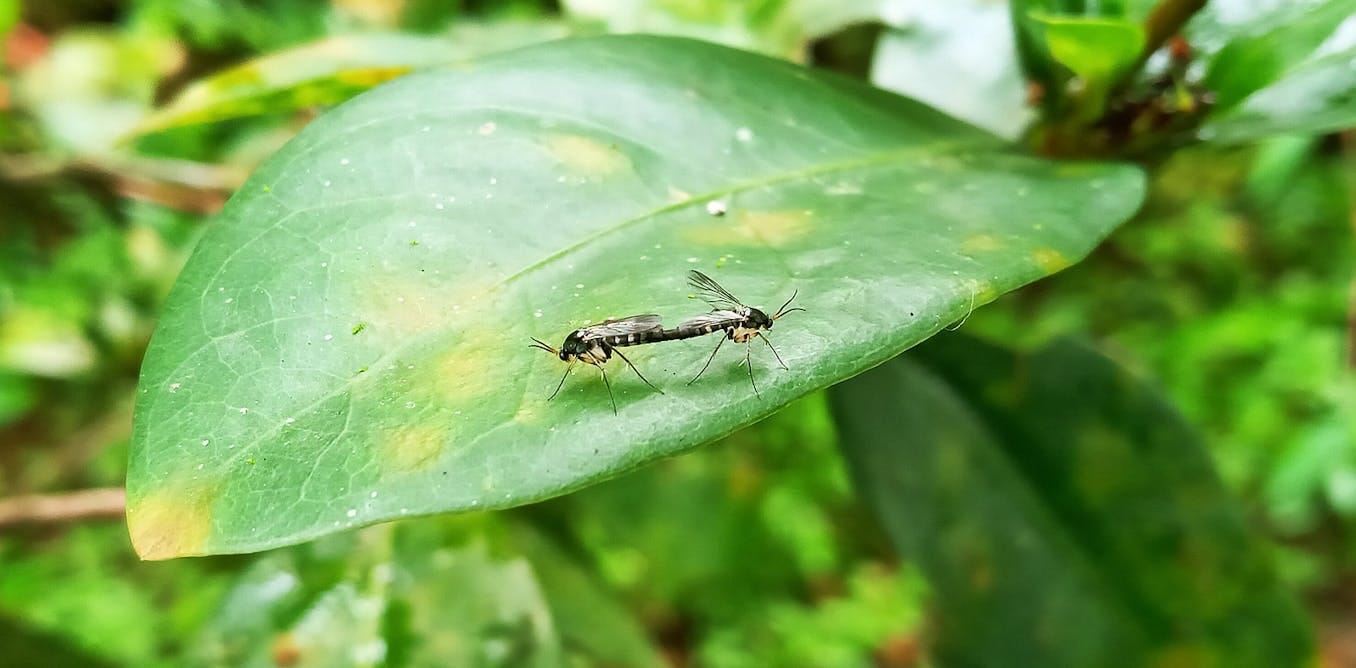Insects pose significant threats, spreading devastating diseases and causing substantial economic losses in agriculture. Traditional pesticides face increasing resistance and can harm beneficial insects, the environment, and human health. A promising alternative involves genetically engineering insects to control their populations or prevent disease transmission.
This article explores a novel genetic biocontrol method: the toxic male technique. Developed by researchers at Macquarie University, this approach aims to engineer male insects to produce poisonous semen, leading to the rapid death of females after mating. This method could offer a faster and more effective way to control pest populations, especially during outbreaks.
We delve into the science behind this technique, its potential benefits, challenges, and safety considerations. Additionally, we examine alternative strategies, such as paratransgenesis, and discuss the importance of developing diverse methods to combat insect pests effectively.
Genetically Modified Insects for Pest Control
Genetic biocontrol offers a promising alternative to pesticides. This strategy involves genetically altering insects to cause population decline or prevent disease transmission. The concept of sterile male release, using radiation to create infertile males, has been around for decades. Genetically modified males mate with females, resulting in no offspring and a declining population.
Recent advancements in genetic engineering have led to the introduction of dominant lethal genes into insect populations. Offspring inheriting these genes die before reaching reproductive age. Field trials have demonstrated significant reductions in mosquito populations using this approach. Another strategy involves modifying insects to be poor carriers of pathogens.
Despite these advancements, current genetic biocontrol methods have limitations. They require at least one generation before population suppression begins, meaning female insects continue to transmit diseases or damage crops until they die naturally. An ideal technique would neutralize females immediately, particularly during outbreaks.
A Faster Approach: The Toxic Male Technique
Researchers at Macquarie University developed the toxic male technique to address the limitations of existing methods. This technique involves genetically engineering male insects to produce poisonous semen, killing females quickly after mating. This could lead to a faster reduction in pest populations.
The team tested this idea using fruit flies, transferring venom genes from the Brazilian wandering spider and the Mediterranean snakelocks sea anemone into the fly genomes. The genetically modified flies produce and store venom proteins in their male accessory gland, depositing the venomous semen into the female’s reproductive tract during mating.
The seminal toxins attack the female’s central nervous system, binding to ion channels on cellular membranes and disrupting nerve cell communication. This leads to paralysis and respiratory arrest, significantly reducing the female’s lifespan.
How the Toxic Male Technique Works
The toxic male technique leverages the power of venom to disrupt the female insect’s physiology. Once the venomous semen is transferred to the female, the toxins quickly spread throughout her body, targeting the nervous system. By interfering with the ion channels responsible for nerve cell communication, the toxins cause paralysis and respiratory arrest.
The researchers observed a significant reduction in the lifespan of female flies that mated with toxic males, with a decrease of up to 64%. Computer simulations suggest that this approach could be more effective than current methods for controlling mosquito populations, particularly those that transmit viruses like Zika.
This novel approach offers a faster and more direct way to control insect pests. By immediately neutralizing females, the toxic male technique can prevent disease transmission and crop damage more effectively than methods that require multiple generations to take effect.
Safety and Effectiveness: Challenges and Considerations
While the toxic male technique shows promise, several challenges must be addressed. The technique has only been demonstrated in fruit flies, and its effectiveness in mosquitoes or other insect pests remains uncertain. The reduction in female lifespan ranged from 37% to 64%, indicating room for improvement.
Researchers suggest exploring other venom formulations to enhance the killing rate. Testing various venom genes from spiders, snakes, scorpions, and centipedes could identify more potent toxins. However, it is crucial to ensure that modified males tolerate these toxins and remain competitive for mating opportunities.
As with all genetic biocontrol methods, cost is a significant concern. Implementing the toxic male technique may be too expensive for low-income countries. Furthermore, monitoring potential environmental effects on pollinators and other animals is essential and can add to the overall cost.
Alternative Strategies for Insect Pest Control
Other researchers are exploring alternative strategies, such as paratransgenesis, to control parasites transmitted by female insects. This technique involves altering an insect’s gut bacteria to produce a toxin that kills the parasite without harming the insect. Paratransgenesis may pose less risk to ecosystems since it does not alter the insect population.
Given the rapid adaptation of insects to control methods, having multiple strategies is advantageous. The toxic male technique may become a valuable tool in the fight against insect pests. Its potential for rapid population control and reduced reliance on pesticides makes it a promising area for future research.
By combining different approaches and continuously innovating, we can develop more effective and sustainable ways to manage insect populations, protect public health, and safeguard our food supply.
Conclusion: A New Era in Insect Pest Control
The toxic male technique represents a significant advancement in insect pest control. By making sex lethal for insects, this novel approach offers a faster and more direct way to reduce pest populations, prevent disease transmission, and protect crops.
While challenges remain in terms of safety, effectiveness, and cost, the potential benefits of this technique are substantial. Ongoing research and development will be crucial to refine the method, explore alternative venom formulations, and address potential environmental impacts.
As insects continue to adapt to existing control methods, it is essential to have a diverse arsenal of strategies at our disposal. The toxic male technique, along with other innovative approaches like paratransgenesis, offers hope for a future where we can effectively manage insect pests without harming the environment or human health.
